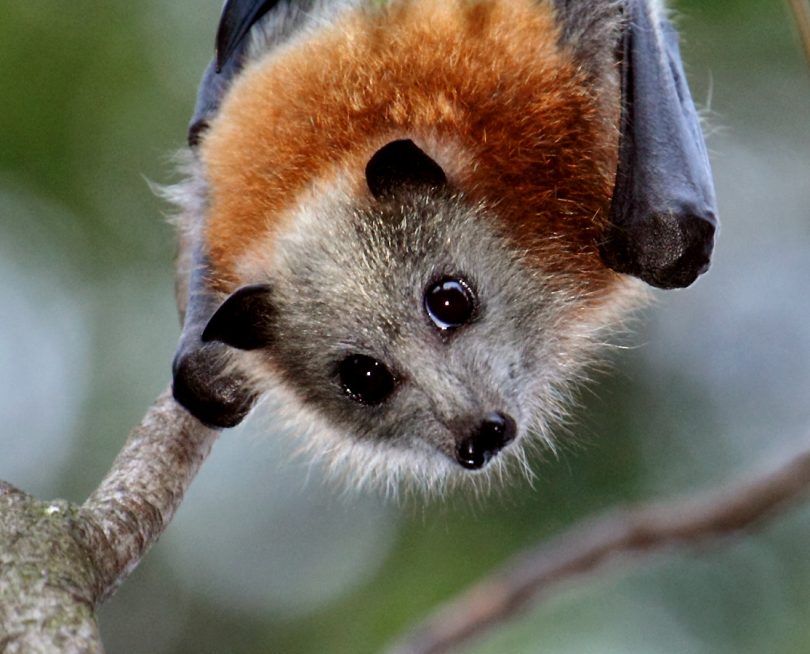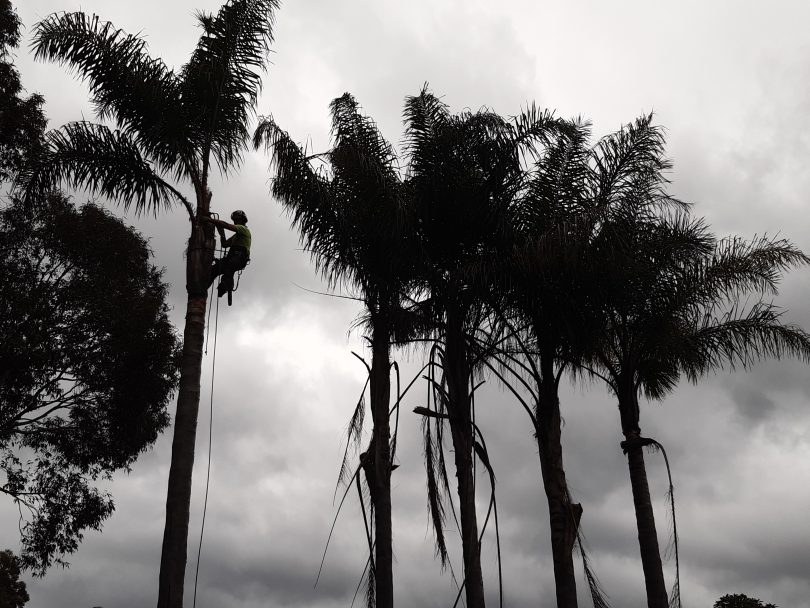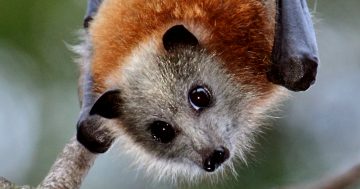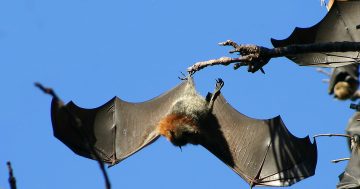
Flying fox numbers for Eurobodalla this year are the lowest recorded since official counts began in 2012. Photo: Eurobodalla Shire Council.
The number of flying foxes at known Eurobodalla camps this year are the lowest recorded since official counts began in 2012.
Around 3380 flying foxes were counted at the five camps – Batemans Bay water gardens, Catalina Golf Club, Moruya, Tuross Head and Narooma – at the peak of the 2020-2021 season, compared to 19,550 in 2019, and more than 250,000 in 2016.
Eurobodalla Shire Council’s flying fox officer, Natalie Foster, said the low numbers of grey-headed flying foxes are likely due to food shortages in the shire following the 2019-2020 Black Summer bushfires.
“There were many reports of flying foxes lost during and after the bushfires, with evidence supporting a significant reduction in the overall population,” she said.
The NSW Department of Planning, Industry and Environment estimated 68,500 NSW flying foxes died due to drought, fire and heat stress in 2019-2020.
“With 79 per cent of Eurobodalla fire-affected, food for the flying foxes would be impacted and it’s likely that influenced our numbers here,” said Ms Foster. “We know some of the camps further south in unburnt areas of the Bega Valley had record numbers of flying foxes visiting last season.
“Interestingly, the flying foxes also left Eurobodalla in mid-May, which is earlier than usual.”
The majority of complaints to council about flying foxes and their camps have to do with noise and faecal mess when the animals forage in residential areas.
In 2016, record numbers of grey-headed flying foxes at the Batemans Bay water gardens led to the development of the Eurobodalla Flying Fox Management Plan, adopted by council in 2018.
Ms Foster said that stakeholder engagement at the time showed 75 per cent of respondents sought long-term solutions to flying fox impacts on residents.
“For example, council has created buffer zones by removing vegetation between private property and camps; offered a variety of subsidies to affected residents; and provided the use of high-pressure cleaners to anyone needing to clean up bat waste.”
More recently, council has worked with residents to remove weedy cocos palms. Their large bunches of fibrous fruit are very attractive to flying foxes, but also can be harmful, even fatal.

Eurobodalla Shire Council has assisted in the removal of 175 weedy cocos palms from residential gardens – the fibrous fruit is attractive to flying foxes but can harm and even kill them. Photo: Eurobodalla Shire Council.
Ms Foster said around 175 cocos palms had been removed from gardens in high-priority areas near flying fox camps.
“We’ve supplied residents with a native tree to replace the removed palms,” she said.
More information about flying foxes in the shire, including the Eurobodalla Flying Fox Management Plan, is available here.










